2021, video, installation
Exhibition at Golubitskoe Art Foundation
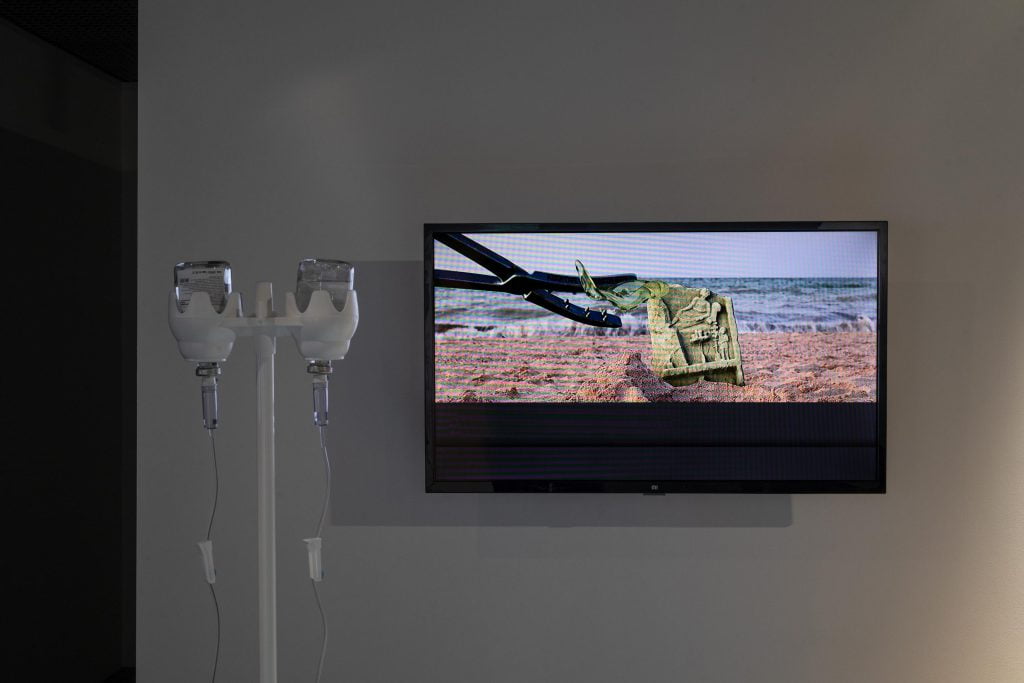
In the 21st century, archaeology has, to an extent, faced
an identity crisis: once a romantic profession of pioneers,
it has become one of the tools for the industrial development
of the planet. An archaeologist’s shovel helps to study
the history of humankind, but the fully surveyed site
ceases to exist; its resources are finite. The excavation
of a burial mound or a settlement means its destruction
and inaccessibility for future generations — it only continues
to exist in the form of plans, photographs, scientific
articles and 3D models. The archaeological community
holds regular discussions on the necessity of surveying
every detail of the site, but they have failed to reach
a consensus so far.
An archaeological site is a finite resource, an underground
deposit of invaluable information that is worth being
preserved provided it is not threatened with imminent
destruction. Some believe that there will be no need
to excavate sites in the future as scientists will be
in possession of more advanced methods for obtaining
information. Today, industrial activities and incorrect
archaeological excavations as well as metal detectorists
catering for antiquities collectors threaten the heritage
of the past (Fagan, DeCorse, 2007: 46-47). Some believe
still that we need to get there ahead of them. At the same
time, in the last 50 years we have seen a rapid development
of non-destructive, or non-invasive, archaeological survey
techniques (X-ray fluorescent analysis, radiography, the
use of GIS and remote sensors, geophysical methods),
which instils a certain sense of optimism.
‘Oftentimes, scientists regard the discovery of an ancient
object as a success, and from this moment on starts the
selfless process of «rescuing» the object, which otherwise
would have still been inside the earth, safely tucked in the
soil. I would like to raise the issue of the relevance of the
extraction of architectural monuments, given the rapid
development of analysis technologies, digital scanning,
DNA tests, etc. […]
To this end, I have made a three-part video, in which I compared
archaeological work with the work of an obstetrician removing
a fetus ahead of time and using medical instruments designed
to destroy it. In this work, I conducted 3D scanning of the
finds from the main archaeological museums of Taman and
also used footage of the most short-lived archaeological
finds — children’s sandcastles on the beaches of the Sea
of Azov.’

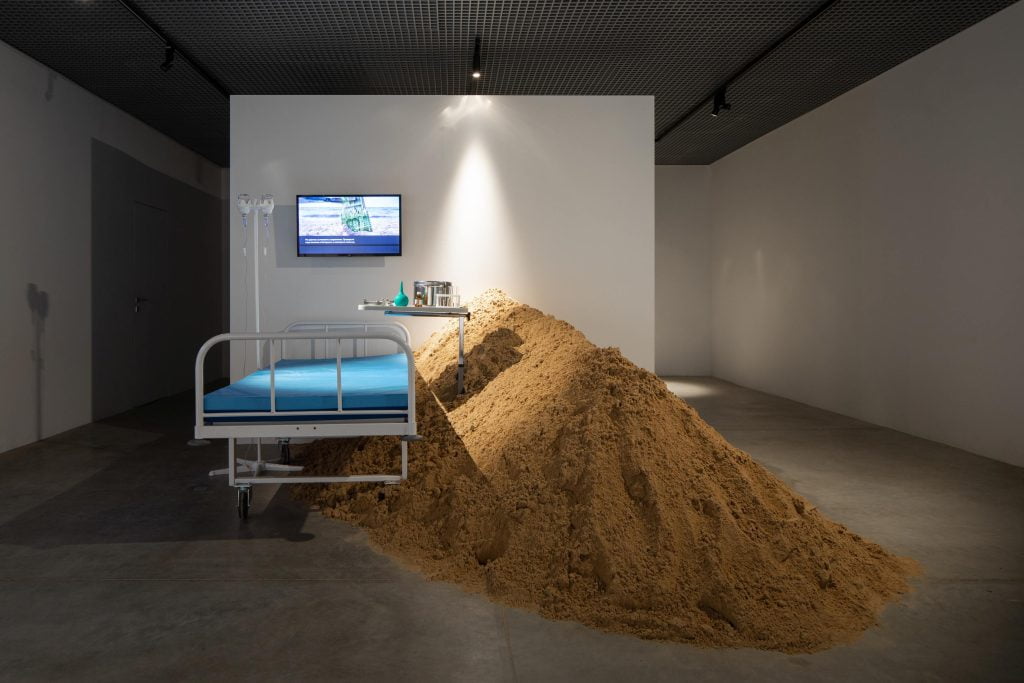

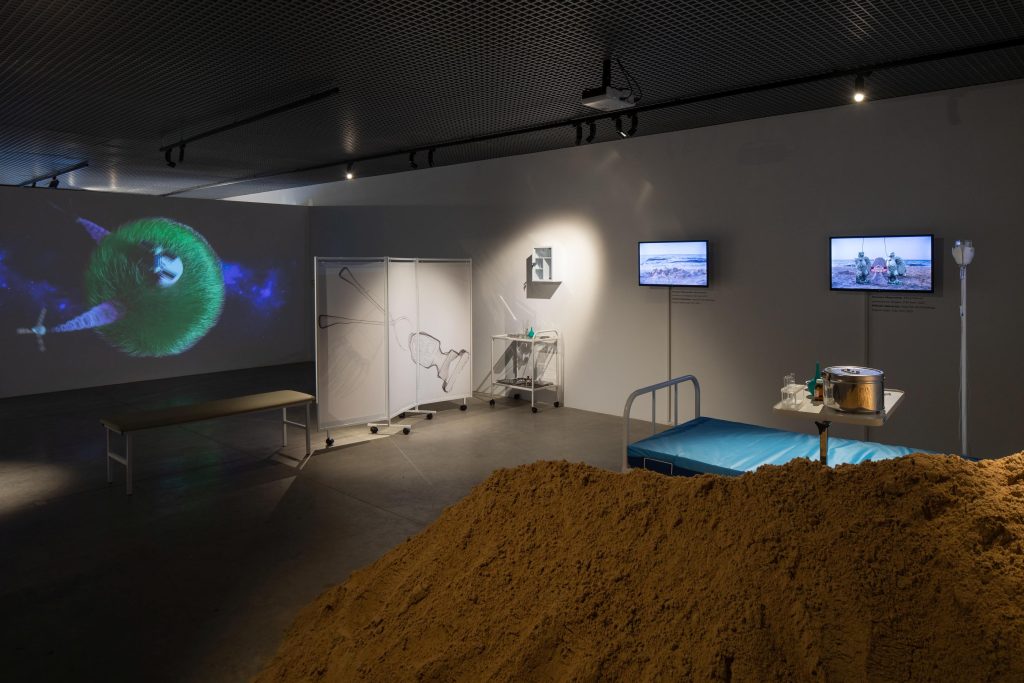

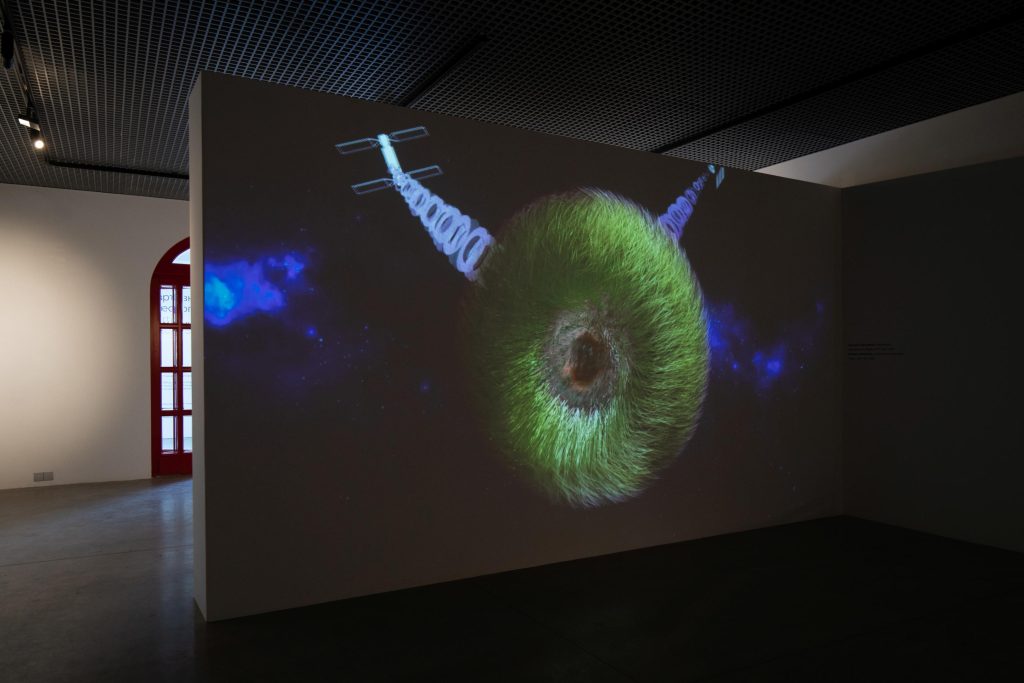
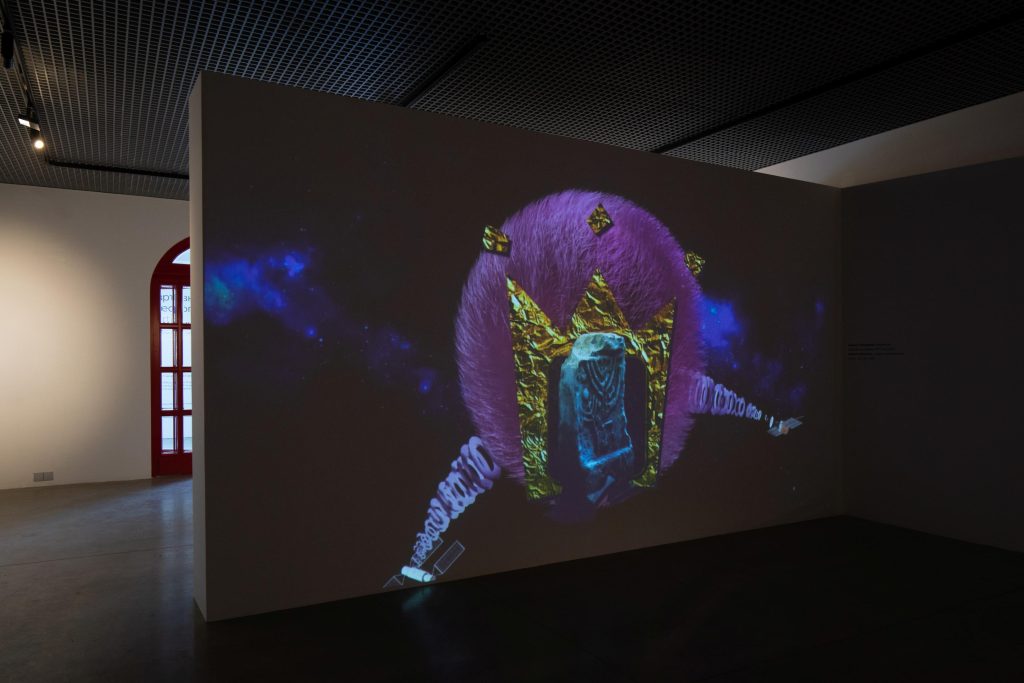
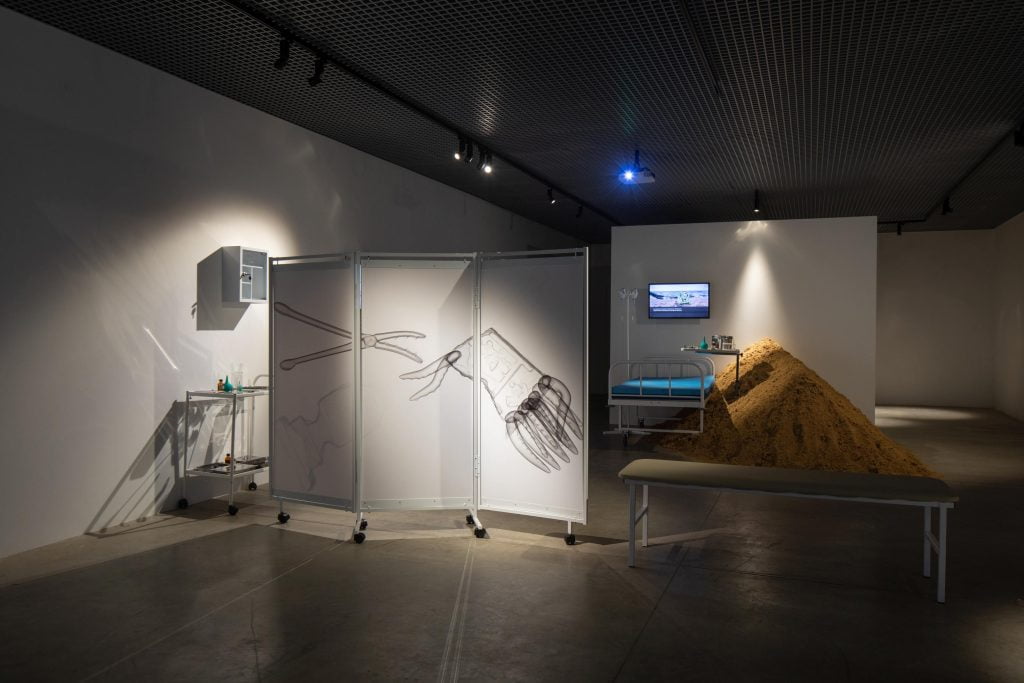
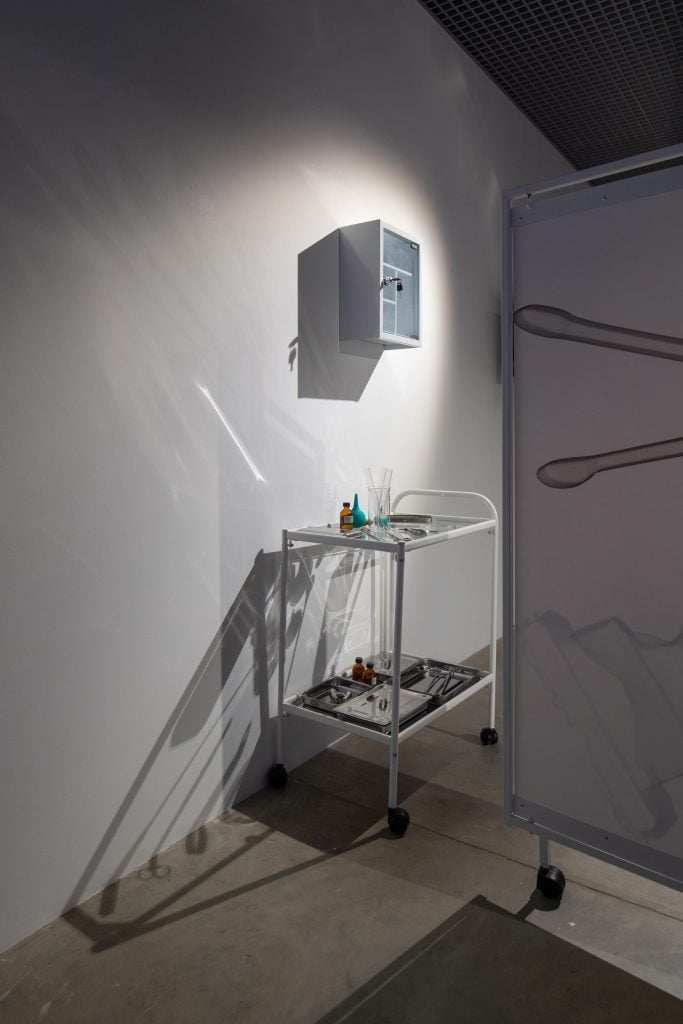
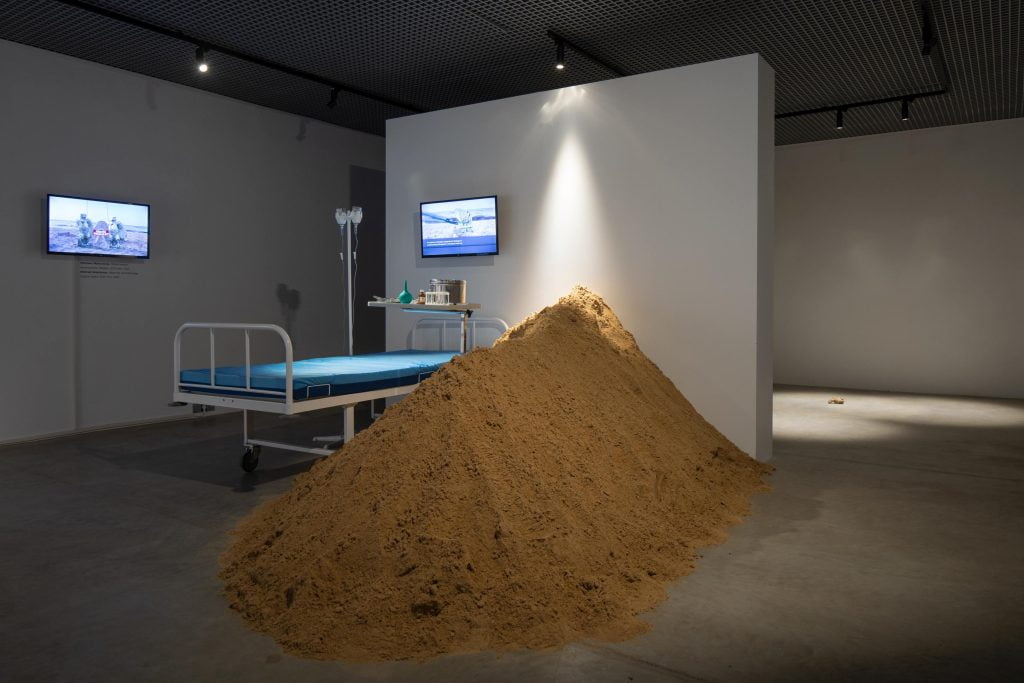
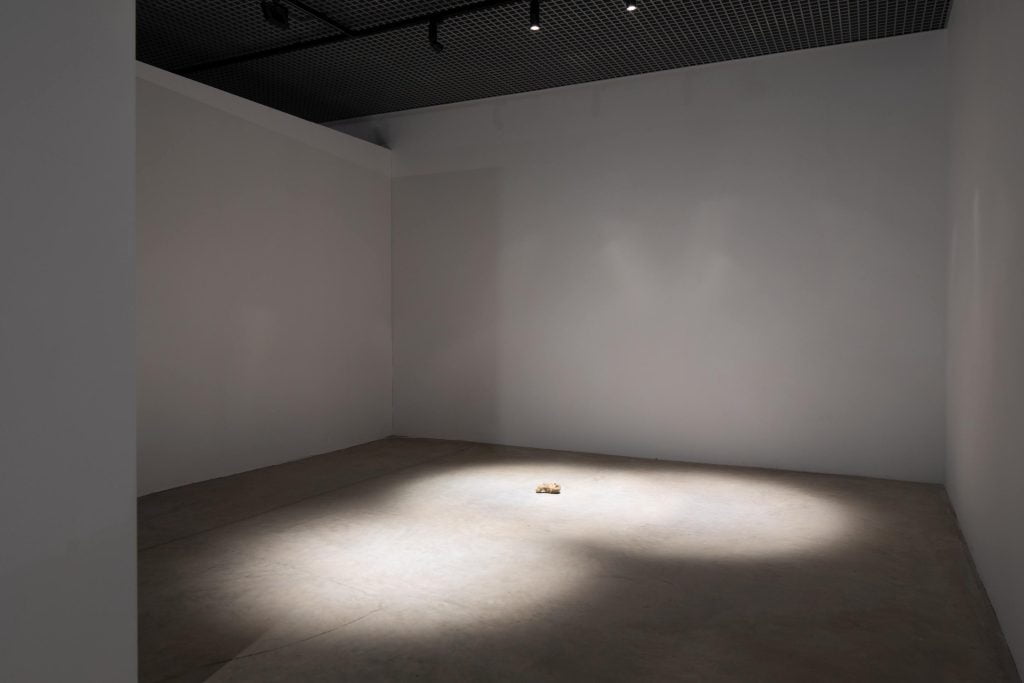
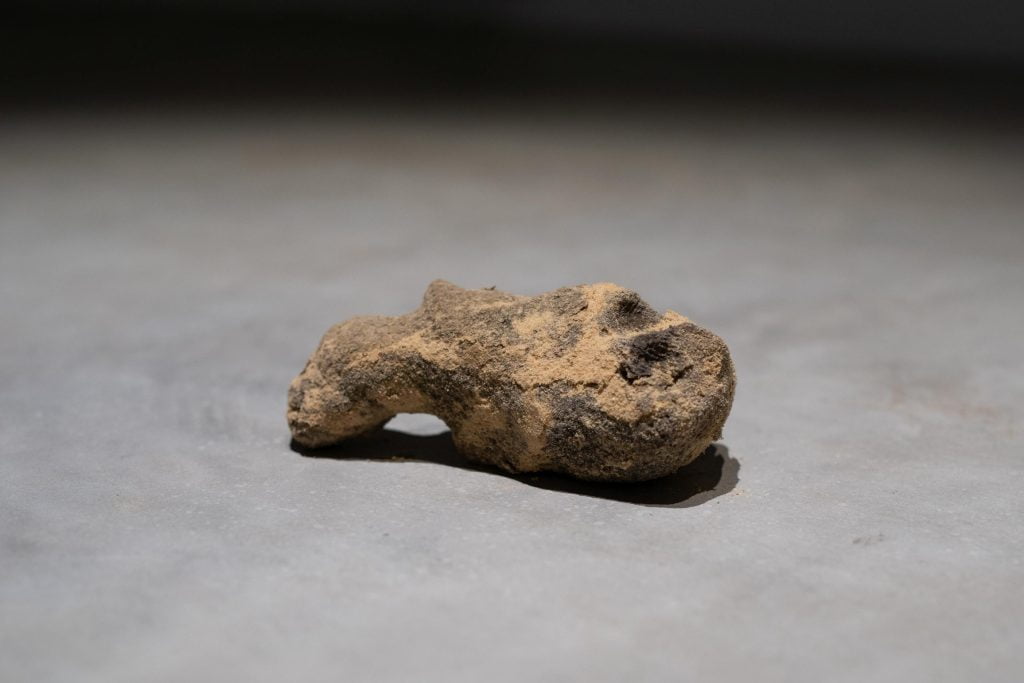
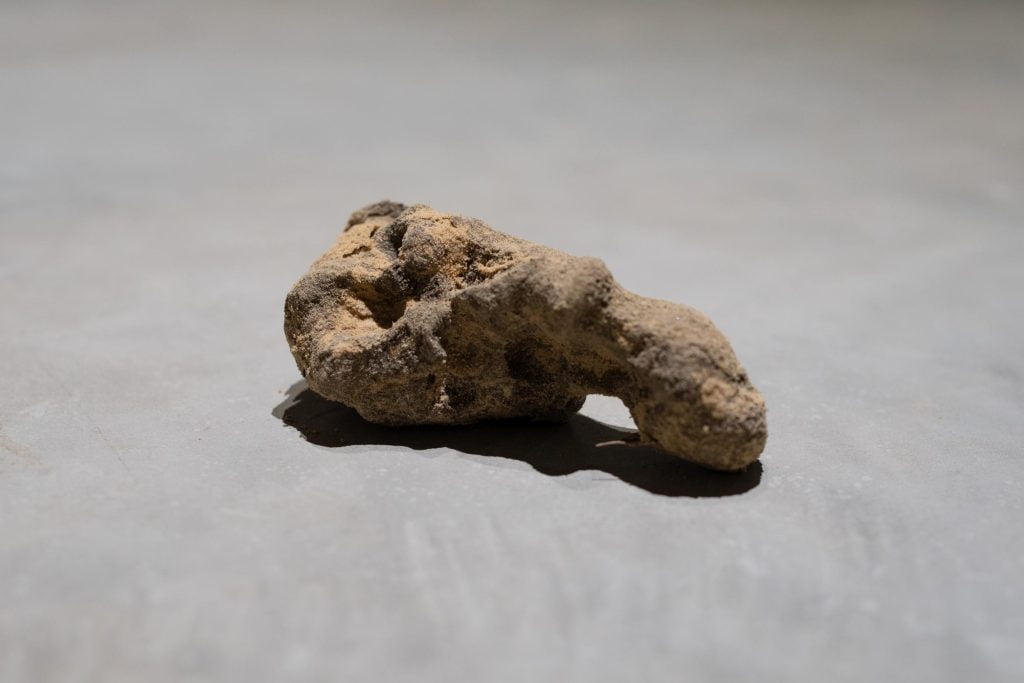

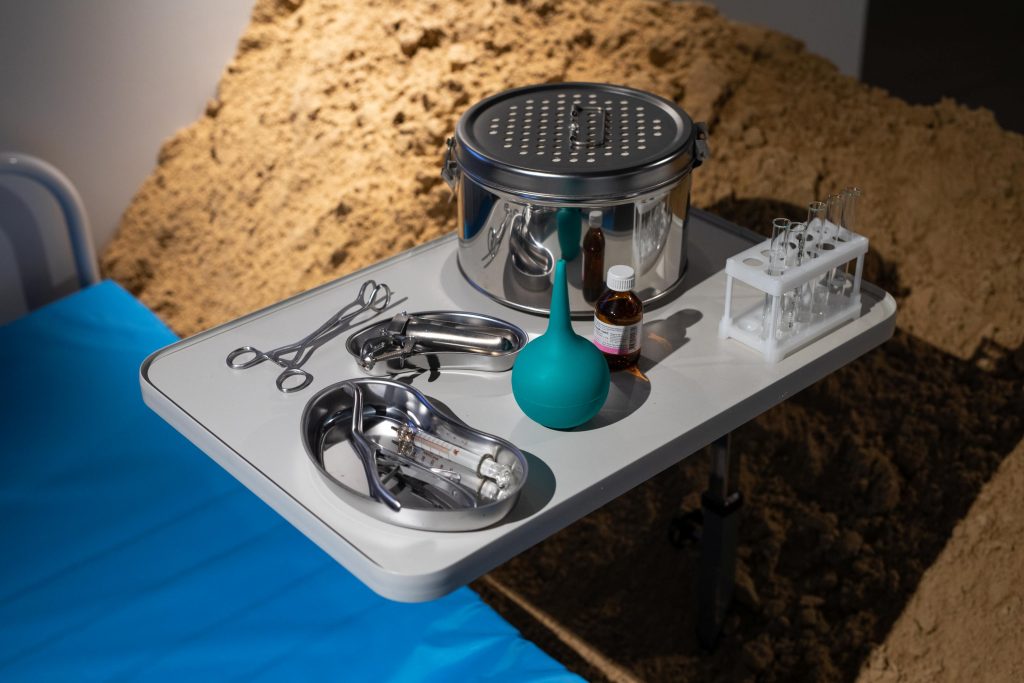

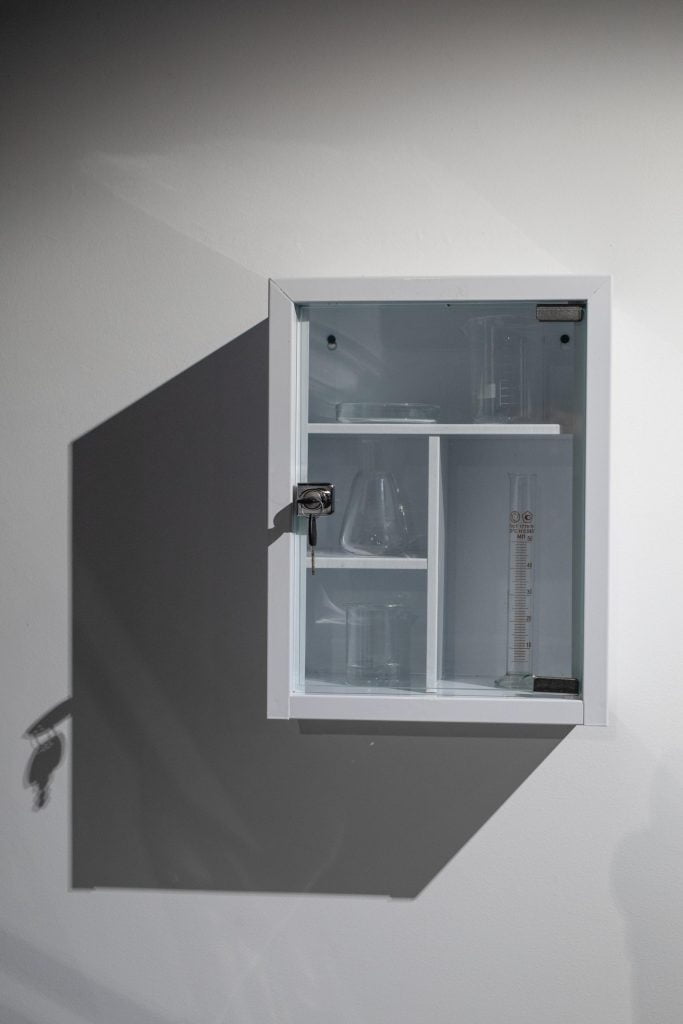


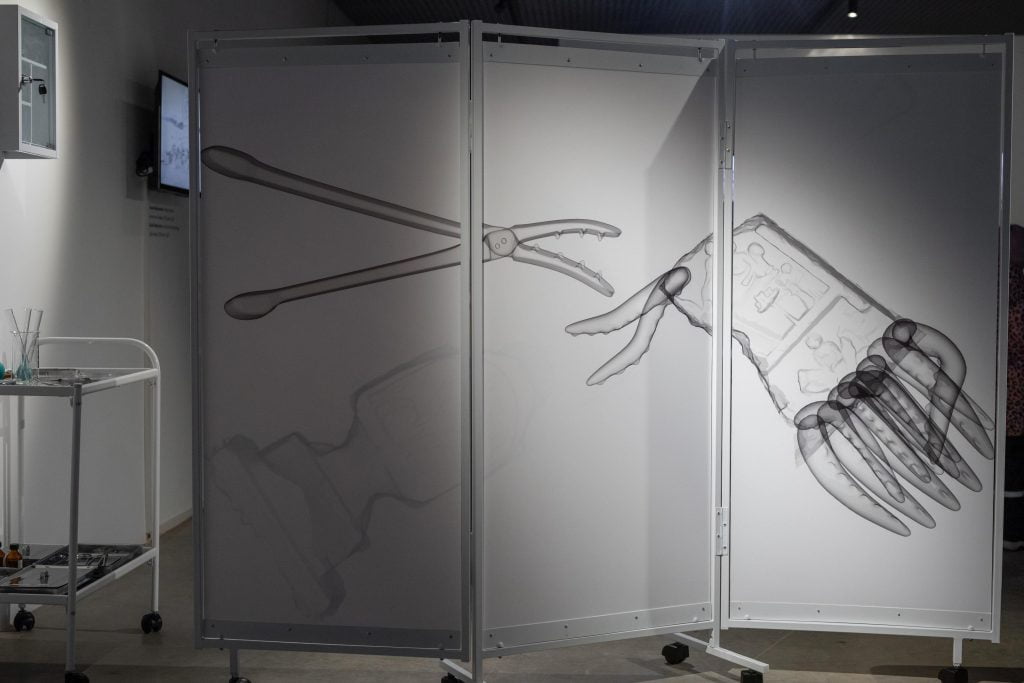
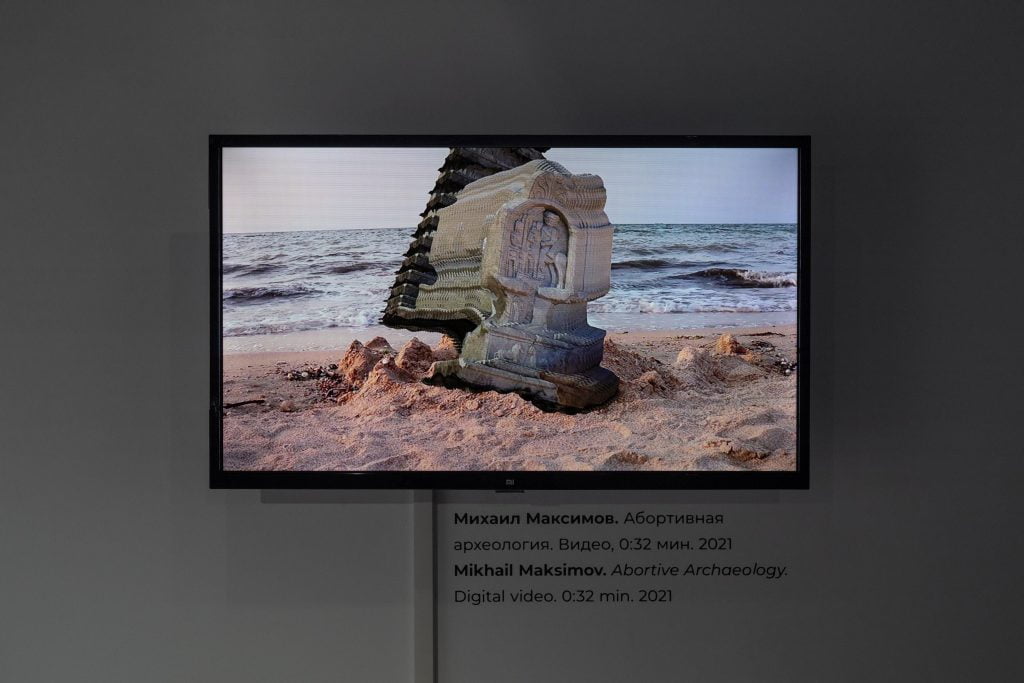
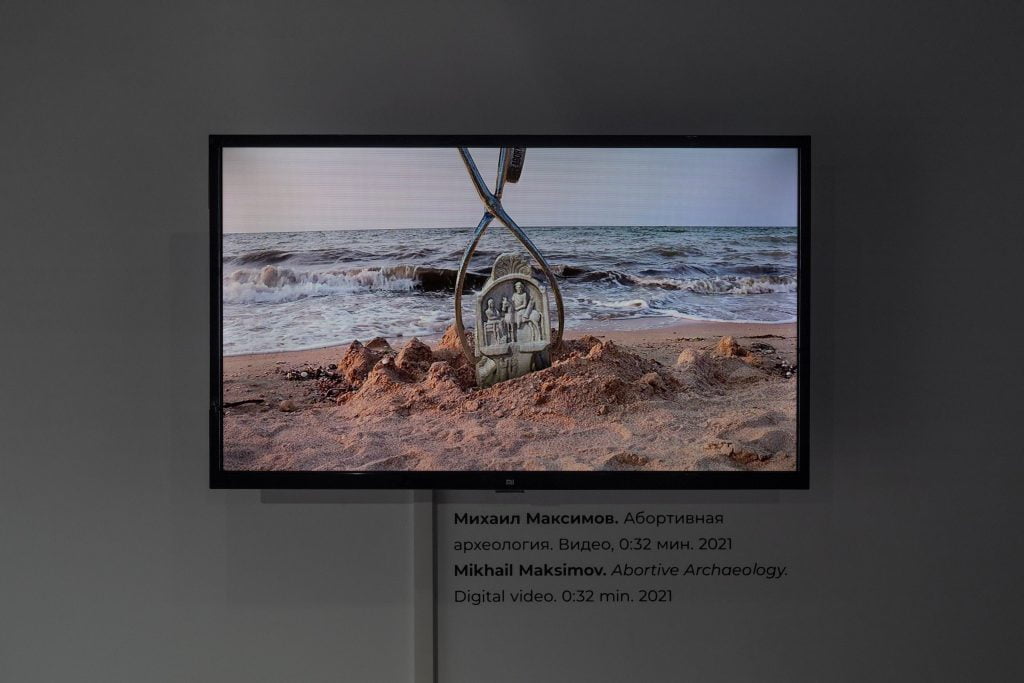
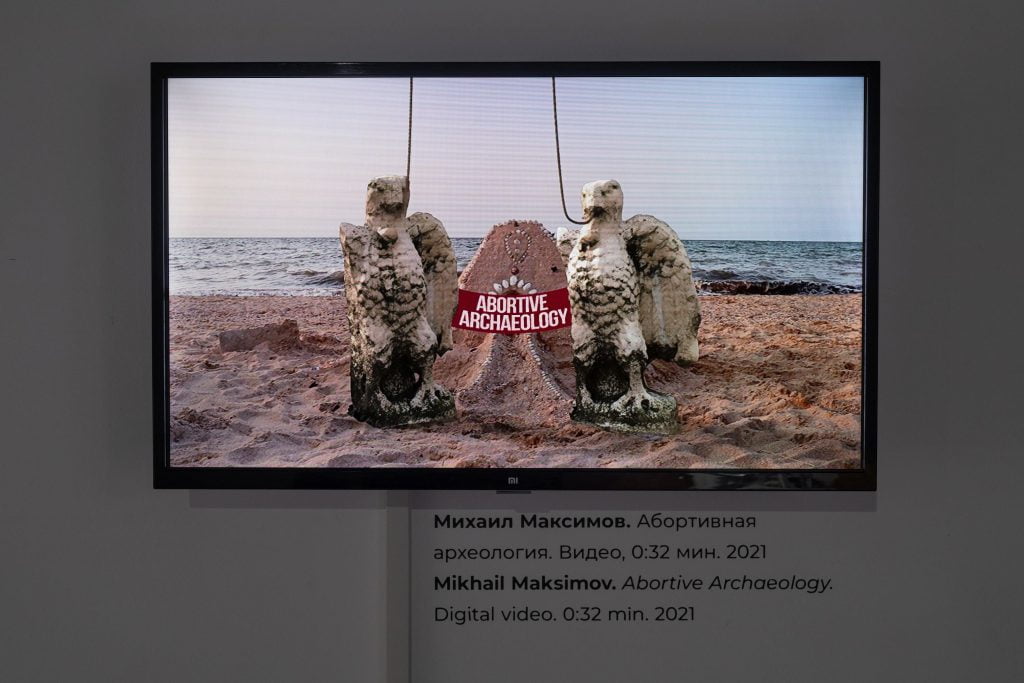


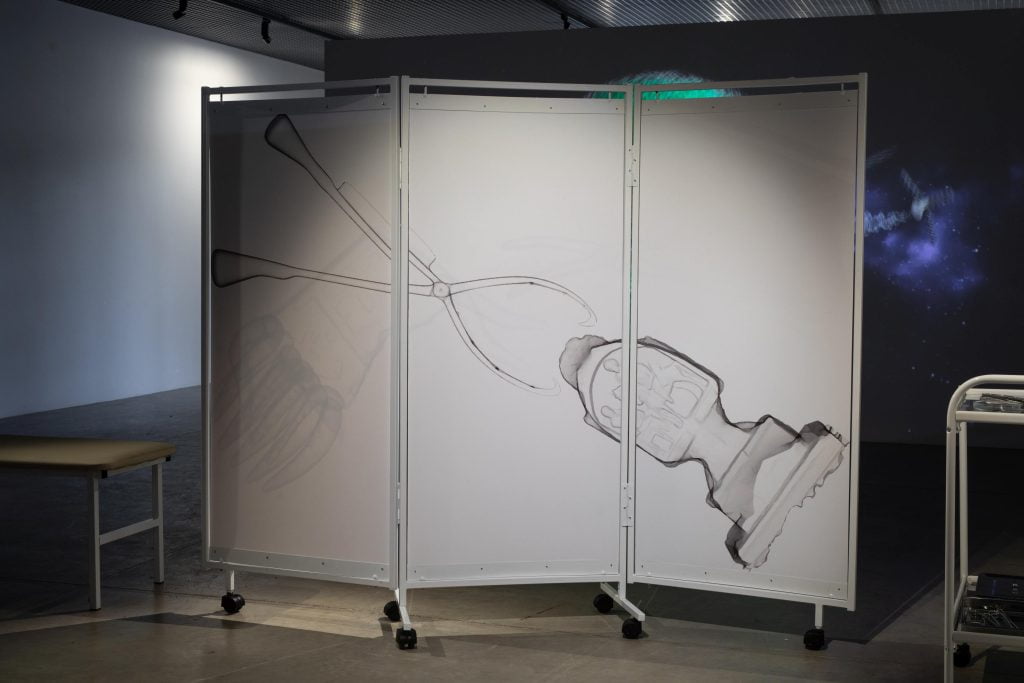
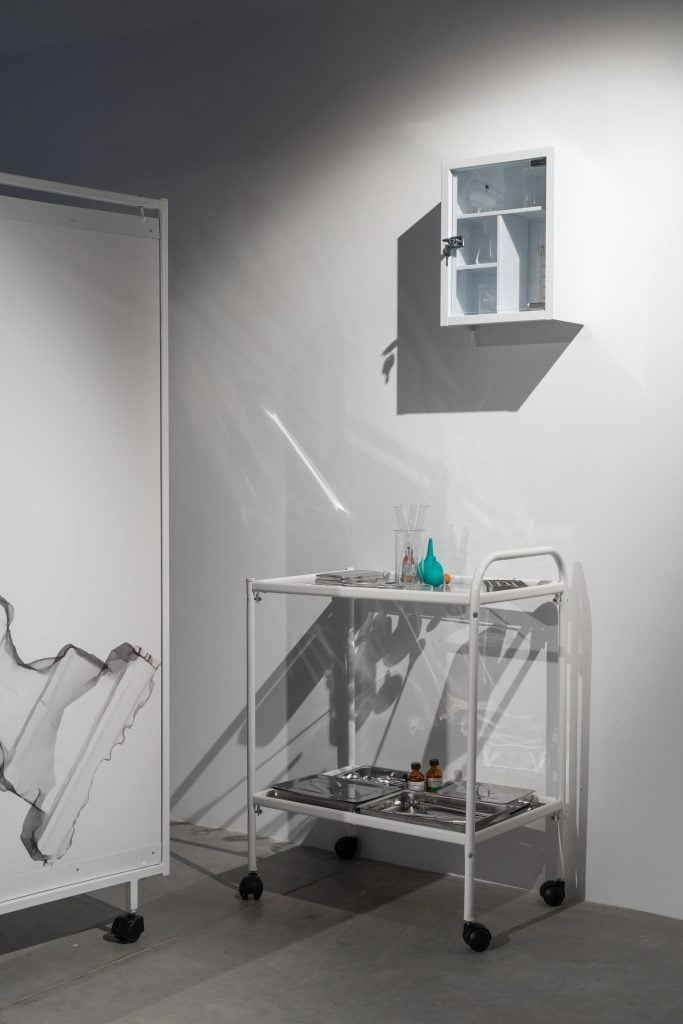
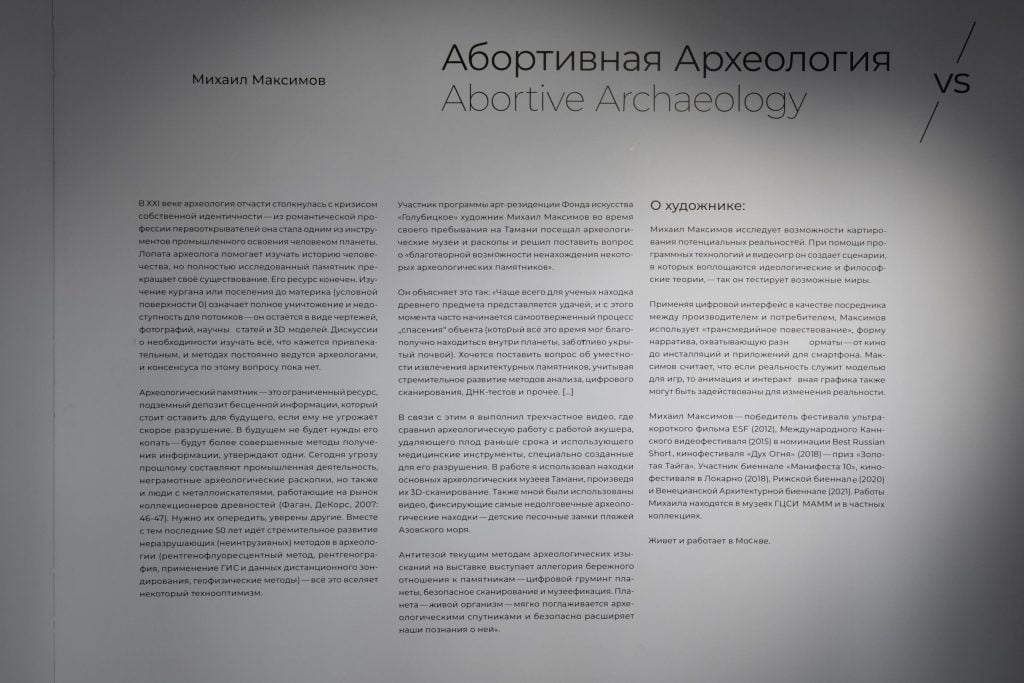
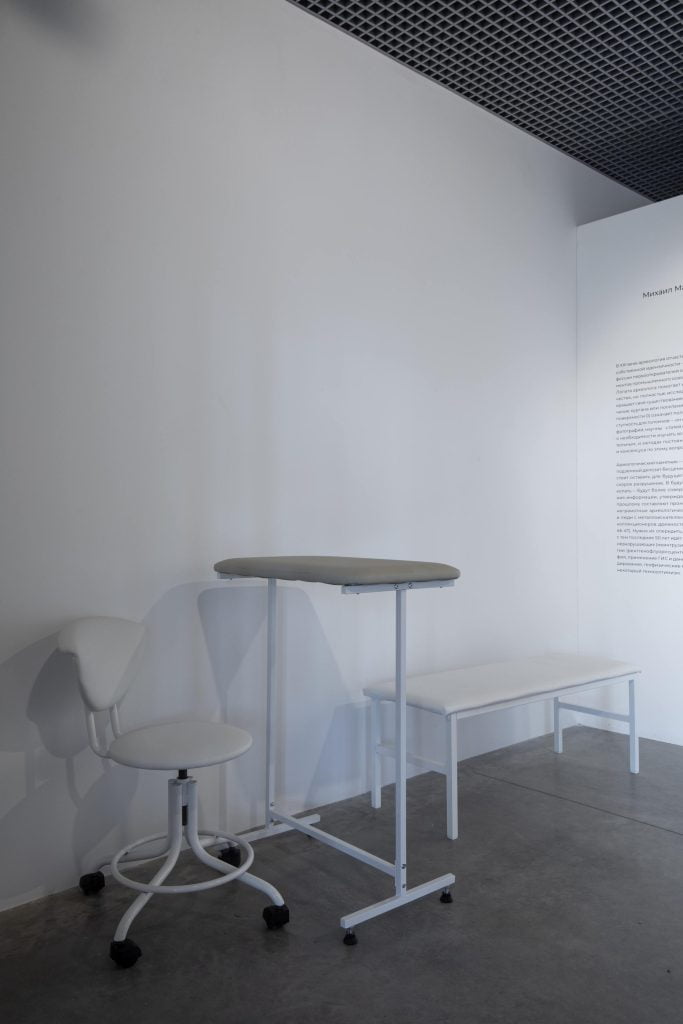
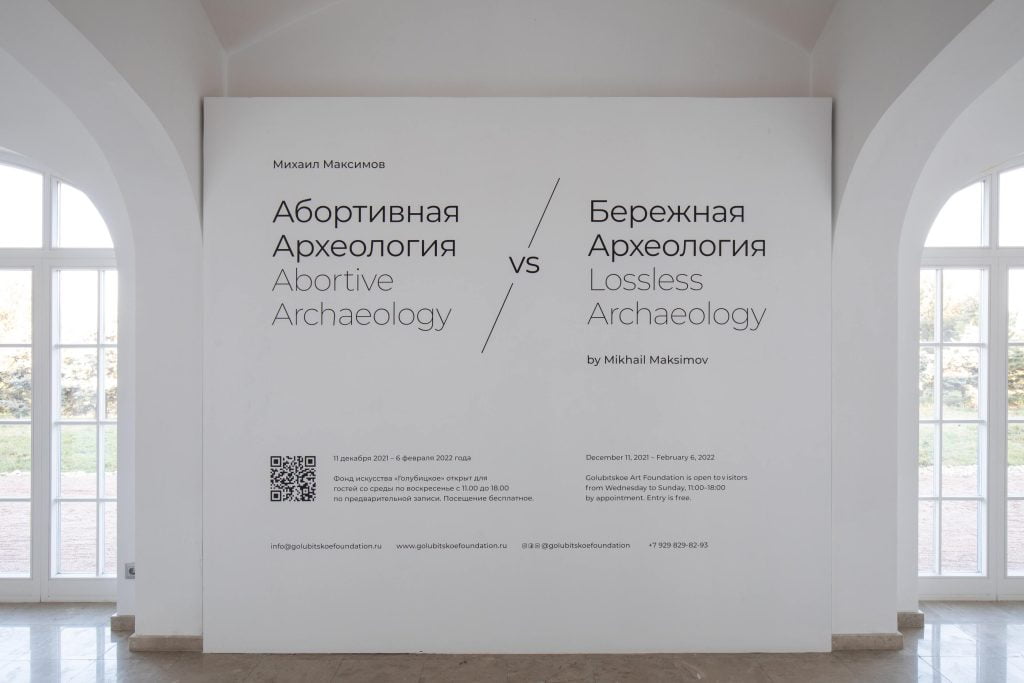
Excerpts from video Abortive Archaeology: